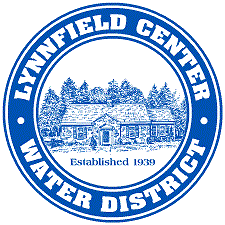Published March 3, 2021

By DAN TOMASELLO
LYNNFIELD — The Lynnfield Center Water District Board of Commissioners voted to increase rates by 2 percent during a Feb. 24 meeting.
Superintendent John Scenna recalled that the water commissioners approved a three-tier rate structure in February 2020. He said the LCWD collects revenue from water rates as well as a water tax that is included on property tax bills.
“What we did was flip the percentage,” said Scenna. “In 2019, 77 percent of our revenue came from the tax levy. It had nothing to do with the amount of water people used. It had to do with the value of people’s homes. Only 17 percent of the revenue that we raised was from the water that people used. As of right now, about 70 percent of our revenue comes from volumetric rates as opposed to the 30 percent we collect from the tax levy.”
Raftelis senior manager David Fox gave an overview of two different options for the commissioners to consider. He said Option 1 would not make any structural changes to the three-tier system while Option 2 would reduce the three tiers to two.
“We would combine Tiers 2 and 3,” said Fox. “We would leave Tier 1 alone.”
Fox said Option 1’s proposal would keep the Tier 1 rate at $6.45 for zero through 24,000 gallons of water used each quarter. Tier 2’s rate would have stayed at $16.13 if over 24,000 gallons up to 36,000 gallons of water were used each quarter. Tier 3’s rate would remain at $19.35 if over 36,000 gallons of water were used.
Under Option 2’s proposal, Fox said Tier 1’s rate would increase to $6.62 for the zero through 24,000 gallons of water used. Tier 2’s rate would be $16.54 if a homeowner uses over 24,000 gallons of water.
Scenna noted that, “24,000 gallons is typical quarterly consumption for a family of four.”
Fox said the two-tier plan would benefit ratepayers who use a lot of water.
“People using 40,000 gallons and above per quarter would benefit from this change,” said Fox. “It will compress their bill and compress their consumption. The majority of the LCWD’s customer base is in the first tier.”
Fox said, “Water utilities across the country need to continue to increase rates in order to keep up with consumption and capital investments in order to maintain a water system’s infrastructure today and into the future.”
“Although customers are never going to be happy their water bills will be increasing, we found that increasing rates slowly over time allows customers to plan for their increases,” said Fox. “It’s a little more palatable so there isn’t rate shock.”
If ratepayers approve the LCWD’s large capital improvement project this spring, Fox projected the average rate increase will be $200. Scenna told the Villager that rate increase could be “stretched out” over a two- or three-year period if the project moves forward.
Fox said the commissioners could incorporate that increase now even though ratepayers won’t be voting on the capital improvement projects until the LCWD’s Annual Meeting on Monday, May 10.
“We would need about $200 more from a typical residential customer to bring the district’s revenue up to where it needs to be to fund all of those capital improvements,” said Fox.
Water Commissioner Jack Adelson expressed concerns about a “perception problem” that would arise among ratepayers if the board approved the $200 increase before a vote on the capital improvement projects takes place.
“Would it be presumptuous to get that ball rolling now?” Adelson asked.
Fox said the LCWD “doesn’t need that money immediately.”
“I don’t think it will make much of a difference if you wait nine months or a year if the projects get approved,” said Fox. “We still have time after a vote to start increasing these rates and smooth them in over time.”
Scenna concurred with Fox’s viewpoint.
“If the project passes, those costs will start to appear in fiscal year 2023, which starts on July 1, 2022,” said Scenna. “It’s a little disingenuous to start raising money for a project that the district hasn’t supported yet.”
Water Commissioner Andy Youngren asked what the “pros and cons” are for having a two-tier system instead of three.
Fox said the two-tier system would simplify the rate structure and would “incentivize” water consumption.
“We would be able to make a small tweak after making a very big change last year,” said Fox.
Adelson agreed.
“From a perception standpoint, it looks fairer to a lot of people,” said Adelson.
Water Commissioners Chairman Joe Maney asked Scenna if he recommended Option 1 or Option 2.
Scenna recommended Option 2 because it is more “straight forward.”
“The two tiers are defendable,” said Scenna. “The 24,000 gallon limit is a standard water industry average.”
Adelson proposed that the water commissioners adopt Option 2 because the two-tier system would be more equitable and the rate increase would total 2 percent. He also proposed revisiting the $200 additional rate increase for the capital projects after the Annual Meeting.
“We can bump the rates up in a couple of months if things go well,” said Adelson.
Youngren said the two-tier system “makes sense.”
After the discussion, the water commissioners unanimously voted to implement the two-tier rate structure and increase rates by 2 percent.




